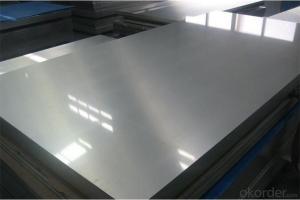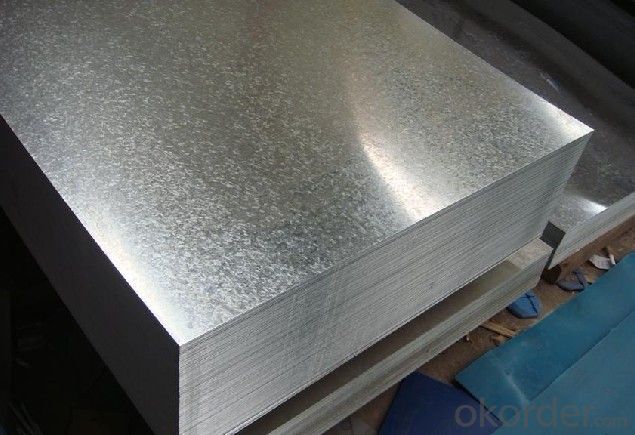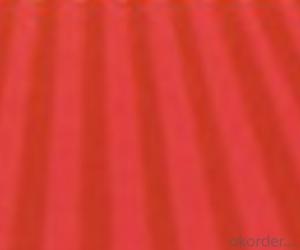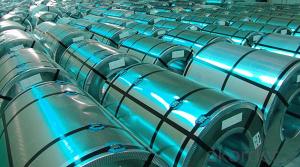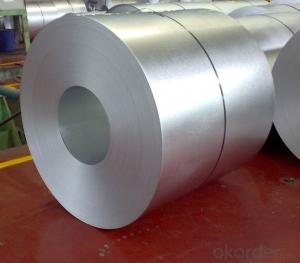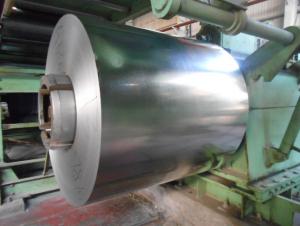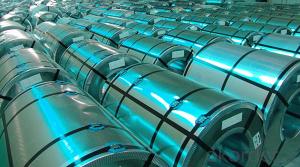Aluzinc Steel Sheet for Roofing with Prime Quality and Best Price
- Loading Port:
- Tianjin
- Payment Terms:
- TT OR LC
- Min Order Qty:
- 50 m.t.
- Supply Capability:
- 10000 m.t./month
OKorder Service Pledge
OKorder Financial Service
You Might Also Like
1.Structure of Aluzinc Steel Sheets Description:
Hot-dip aluzinc steel sheet is substrated on cold rolled steel(CRC) in various strength and specification. Coating composition is 55% aluminium in weight ratio, 43.4% zinc, and 1.5% silicon, with excellent corrosion and heat resistance performance. It is especially useful for countless outdoor and industrial applications.
2.Main Features of the Galvanized Steel Coil:
• Base material for countless outdoor and industrial applications
• Excellent corrosion resistance
• Excellent heat resistance performance
• High strength
• Good formability
• Rust- proof ability
• Good visual effect
3. Aluzinc Steel Sheets Images
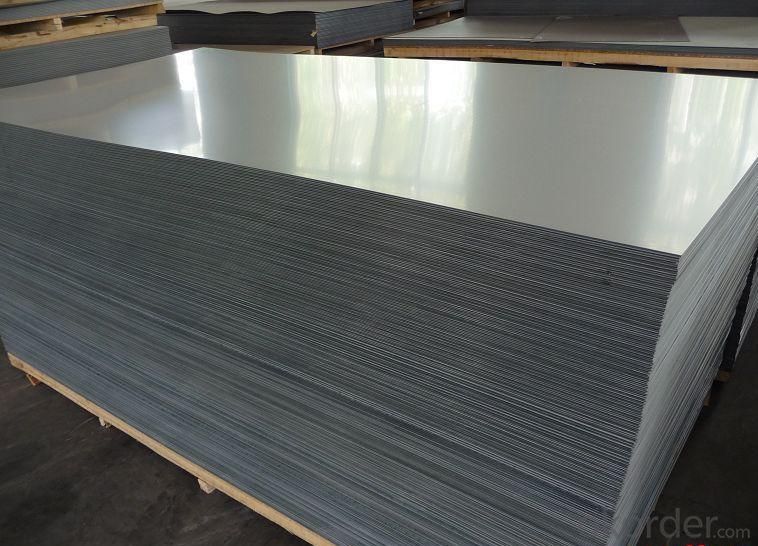
4.Aluzinc Steel Sheets Specification
Thickness: 0.3-0.7mm
Width: 914-1250mm
Inner Diameter: 508-610mm
Weight of Steel Coil: 3-15MT
Coating Type: Al-Zn Alloy
Available Dipped Layer: 50-150g/m2
Surface Finish Structure: Normal Spangle & Small Spangle & Zero Spangle
Available Surface Treatment: Passivating & Oiling & AFP & Filming
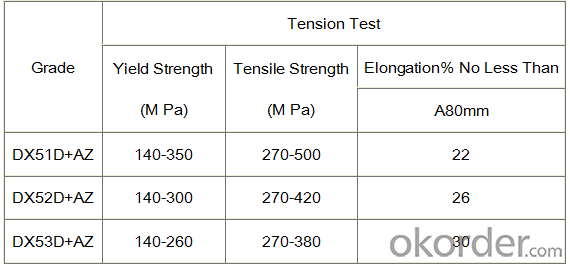
5.FAQ of Aluzinc Steel Sheets
We have organized several common questions for our clients,may help you sincerely:
1. What is the minimum order quantity ?
Our MOQ is 50mt for each size. And we will consider to give more discount if you make big order like 1000 tons and more. Further more, the more appropriate payment term your offer the better price we can provide.
2. How long can we receive the product after purchase?
Usually within thirty working days after receiving buyer’s advance payment or LC. We will arrange the factory manufacturing as soon as possible. The cargo readiness usually takes 15-25 days, but the shipment will depend on the vessel situation.
3. How to guarantee the quality of the products?
We have established the international advanced quality management system,every link from raw material to final product we have strict quality test;We resolutely put an end to unqualified products flowing into the market. At the same time, we will provide necessary follow-up service assurance.
- Q: Are steel sheets resistant to chemical spills?
- Yes, steel sheets are generally resistant to chemical spills. Steel is known for its durability and ability to withstand various chemical substances without corroding or reacting. However, the resistance may vary depending on the specific type of steel and the type and concentration of the chemical involved. It is always recommended to assess the compatibility of the steel with the specific chemical before making any conclusions about its resistance.
- Q: Can steel sheets be used for insulation cladding?
- Typically, insulation cladding does not involve the use of steel sheets. Instead, materials like foam boards, mineral wool, or fiberglass are commonly chosen for their thermal insulation properties. These materials are effective in minimizing heat transfer and enhancing energy efficiency. Conversely, steel sheets are more frequently utilized for structural purposes or as a protective layer owing to their robustness and durability. Though steel sheets can offer some protection, they lack the requisite insulation properties required to effectively prevent the transfer of heat or cold. Consequently, it is advisable to employ suitable insulation materials specifically designed for cladding purposes.
- Q: Are steel sheets resistant to impact or damage?
- Steel sheets are known for their exceptional strength and durability, which makes them highly resistant to impact and damage. Due to their high tensile strength, steel sheets can withstand heavy loads and resist deformation or breakage when subjected to external forces. They are often used in applications where impact resistance is critical, such as in construction, automotive manufacturing, and industrial settings. Additionally, steel sheets can withstand extreme temperatures, corrosion, and environmental factors, which further contributes to their overall resistance to damage. However, it is important to note that the specific resistance to impact or damage may vary depending on the thickness, quality, and composition of the steel sheet.
- Q: What are the different methods of surface texturing for steel sheets?
- There are several methods of surface texturing for steel sheets, including mechanical methods such as embossing, engraving, and milling, as well as chemical methods like acid etching and electrochemical etching. Other techniques include laser texturing, shot blasting, and coating applications like powder coating or painting. Each method offers unique advantages and can be chosen based on the desired texture, functionality, and aesthetic requirements of the steel sheets.
- Q: What is the difference between a standard and high-strength steel sheet?
- The mechanical properties and performance characteristics distinguish standard steel sheets from high-strength steel sheets. Standard sheets are typically made from low to medium carbon steel, having a yield strength of approximately 250 MPa. These sheets are commonly utilized in applications that do not require extreme strength or resistance to deformation. In contrast, high-strength steel sheets contain a higher carbon content and alloying elements like manganese, chromium, or nickel. This composition empowers them with significantly higher yield strengths, ranging from 350 to over 1,000 MPa. Consequently, high-strength steel sheets offer improved resistance to deformation, higher tensile strength, and enhanced durability. Given their superior mechanical properties, high-strength steel sheets are often chosen for applications that necessitate heightened strength-to-weight ratios, such as automotive components, structural parts, and heavy machinery. These sheets can withstand greater loads, endure extreme conditions, and provide superior protection in the event of impact or sudden forces. While standard steel sheets are more readily available and less costly, high-strength steel sheets are preferable in situations where exceptional strength and performance are imperative. However, it is important to note that high-strength steel sheets may present challenges in terms of forming, welding, or machining due to their increased hardness. Therefore, careful consideration of the specific application requirements is vital when deciding between standard and high-strength steel sheets.
- Q: Can steel sheets be used in the telecommunications industry?
- Indeed, the telecommunications industry can make use of steel sheets. Given their strength, durability, and capability to safeguard delicate equipment, steel sheets find frequent application in various sectors of the telecommunications industry. They are commonly utilized in the production of communication towers, antenna mounts, equipment cabinets, and enclosures. By providing structural support, steel sheets prove resilient against severe weather conditions, including powerful winds, extreme temperatures, and heavy loads. Furthermore, steel sheets can be conveniently fabricated and tailored to meet specific demands, rendering them a favored option within the telecommunications industry.
- Q: What are the different sheet metal bending techniques for steel sheets?
- Steel sheets can be manipulated and shaped using various sheet metal bending techniques. These techniques help achieve desired forms and angles. Some commonly used techniques include: 1. V-bending: A V-shaped punch and die set are used to create a sharp bend in the steel sheet. The material is placed between the punch and die, and force is applied to form the desired angle. V-bending is versatile and can create different angles and shapes. 2. Air bending: In this technique, a punch presses the steel sheet into a V-shaped die without completely contacting the material. Bending is achieved by controlling the depth of penetration of the punch. Air bending allows for greater flexibility in angle adjustments and requires less force. 3. Edge bending: This technique involves bending the edge of the steel sheet to create flanges or edges with specific angles. The sheet is clamped between a punch and a die, and force is applied to bend the material along the edge. 4. Bottom bending: This technique is used to create larger bends in steel sheets. The sheet is clamped between a punch and a V-shaped die, and force is applied to bend the material around the die. Bottom bending is suitable for creating U-shaped parts or boxes. 5. Roll bending: Also known as cylindrical bending, this technique is used to create cylindrical or curved shapes in steel sheets. The sheet is passed through a set of rolls that gradually bend the material into the desired shape. Roll bending is commonly used in the production of pipes, tubes, and cylinders. 6. Coining: Coining is a precision bending technique that creates crisp, sharp bends. The steel sheet is pressed between a punch and a die, with the die featuring a sharp edge. High pressure is applied, resulting in a precise and defined bend. These are just a few of the many sheet metal bending techniques available for steel sheets. Each technique has its advantages and applications, and the choice of technique depends on factors such as the desired angle, sheet thickness, and shape complexity.
- Q: Are steel sheets suitable for cold storage applications?
- Yes, steel sheets are suitable for cold storage applications. Steel is a durable and strong material that can withstand the low temperatures typically required for cold storage. It is resistant to corrosion and does not absorb moisture, making it ideal for keeping the cold air inside the storage area. Additionally, steel sheets can be easily cleaned and sanitized, which is important in maintaining the hygiene and safety of the stored items. Steel also provides excellent insulation properties, helping to maintain a consistent temperature within the cold storage facility. Furthermore, steel sheets can be customized and fabricated to meet the specific size and shape requirements of the cold storage application. Overall, steel sheets are a reliable and practical choice for cold storage applications.
- Q: What is the difference between an open plate and an original plate?
- Open and flat from the original flat surface color to distinguish. Because the Kaiping plate originally is rolled strip, the oxide is less, the same time the Kaiping plate and the original flat for a period of time after the original flat in different colors, red, and blue plates.
- Q: How do steel sheets handle expansion and contraction?
- Due to its unique properties, steel sheets are capable of managing expansion and contraction in a predictable and controlled manner. Steel is renowned for its remarkable strength and durability, enabling it to endure the forces exerted during expansion and contraction without compromising its structural integrity. When steel sheets are exposed to high temperatures, such as those experienced during welding or in extreme environmental conditions, expansion occurs. This expansion is a result of the accelerated movement of steel molecules due to heat, leading to an increase in size. However, steel possesses a relatively low coefficient of thermal expansion, causing it to expand less compared to materials like concrete or wood. This property makes steel an advantageous choice for applications where dimensional stability is crucial. To effectively manage expansion, steel sheets are often designed with expansion joints or gaps that allow for movement. These joints can be found in structures such as bridges, buildings, or pipelines. They are strategically placed to accommodate the anticipated expansion and contraction of steel sheets without causing damage or deformation. Furthermore, the ability of steel to contract is equally significant. When exposed to lower temperatures, steel sheets shrink or contract. Although this contraction is typically less noticeable than expansion, it still needs to be taken into consideration in engineering designs. Fortunately, the contraction of steel is generally within acceptable limits and does not compromise the material's structural integrity. Overall, steel sheets are engineered to effectively handle expansion and contraction. The combination of a low coefficient of thermal expansion and the presence of expansion joints allows steel to accommodate temperature fluctuations without inducing significant stress or deformation. This makes steel a reliable and versatile material for numerous industries, including construction, manufacturing, and infrastructure.
Send your message to us
Aluzinc Steel Sheet for Roofing with Prime Quality and Best Price
- Loading Port:
- Tianjin
- Payment Terms:
- TT OR LC
- Min Order Qty:
- 50 m.t.
- Supply Capability:
- 10000 m.t./month
OKorder Service Pledge
OKorder Financial Service
Similar products
Hot products
Hot Searches
Related keywords

